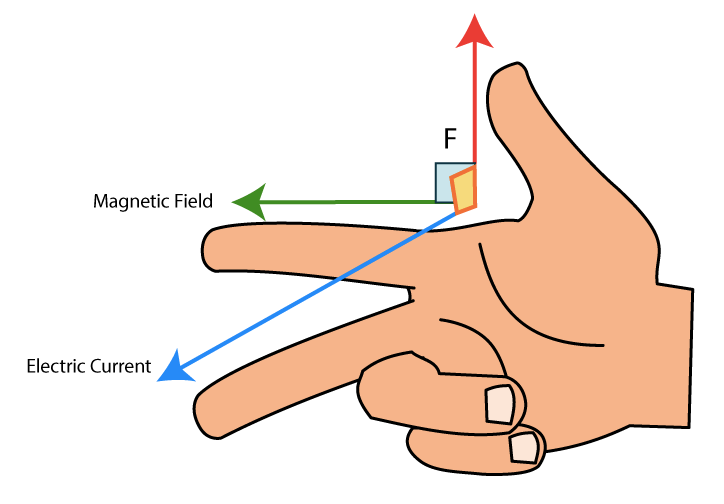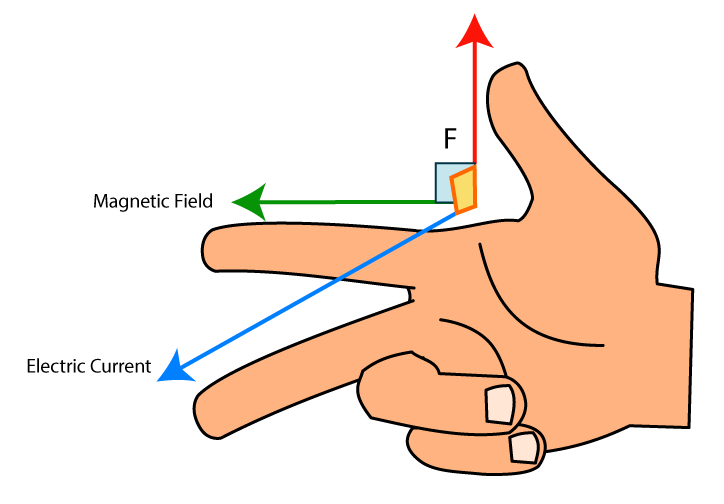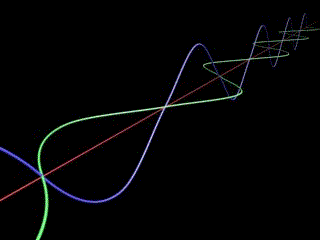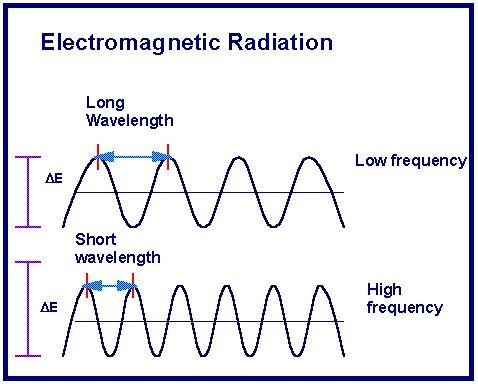An Introduction to Electrodynamics

In physics, an important relation that has been derived is that between electricity and magnetism. Early physicists used to think that electricity and magnetism are two different concepts. But in 1873, a Scottish scientist named James Clerk Maxwell published his ‘A Treatise on Electricity and Magnetism’ which stated that positive and negative charges interact by the mediation of one force.
This helped laying down the foundations of the concept of Electromagnetism. The mediator force is called Electromagnetic Force (or Lorentz Force) and it occurs between charged particles. Electromagnetism is the branch of physics that explains electromagnetic force and the concepts related to it. Electromagnetic force exhibits fields such as electric field, magnetic field and light.
The way in which charged particles move and interact in the presence of these fields is explained using the concepts of Electrodynamics. This article aims at introducing the basics of electromagnetism and electrodynamics as this will help us in understanding how charged particles move about in photovoltaic technology.
So, what exactly is electromagnetism? It is a process where introducing current in a conductor causes a magnetic field to be created in the conductor. Upon becoming electrically charged, a conductor generates magnetic lines of force for itself. If, for instance, current or positive charge moves in a wire, it produces the magnetic field along the wire. The direction of the magnetic lines and force can be determined using Fleming’s Right Hand Rule. This is shown in the figure below. Speakers used in radios and televisions work on the concept of electromagnetism.

When a conductor is placed or moved through a magnetic field, it generates voltage. This principle is called Electromagnetic Induction. The voltage that is generated depends on the speed at which the conductor moves through the magnetic field. The voltage generated is directly proportional to the speed at which the conductor moves i.e. the greater speed of the conductor’s movement is, the greater the voltage induced will be.
Faraday’s Law states that with the relative motion between the conductor and the magnetic field, the flux linkage changes, inducing voltage. This forms the basis for DC generators as depicted in the following figure:

As can be seen in the animation above, a rectangular conductor shaped like a rectangle is placed in between a magnetic field. When the rectangular conductor rotates between the magnets, it cuts the magnetic field. This causes an Electromagnetic field (e.m.f.) to be created.
Electromagnetic force defines electromagnetic phenomena in its terms. This includes electricity and magnetism as different manifestations of the same phenomenon. Electromagnetic force largely determines the internal properties of various objects that we come across in daily life. The electromagnetic attraction between atomic nuclei and the electrons in their orbits holds atoms together.
Electromagnetic forces are also responsible for the chemical bonds between atoms that create molecules, and intermolecular forces. Electromagnetic force also governs all chemical processes which arise from the interactions between the electrons of neighbouring atoms. Having looked at electromagnetism briefly, we now have the basis for understanding electrodynamics.
Electrodynamics explains the phenomena associated with charged particles in motion and changing electric and magnetic fields. As we saw earlier that a moving charge produces a magnetic field, electrodynamics is concerned with effects such as magnetism, electromagnetic radiation, and electromagnetic induction.
This area of electrodynamics is often known as classical electrodynamics. It was first systematically explained by Maxwell. Maxwell’s Equations are a set of four differential equations which describe the phenomena related to classical electrodynamics with greater generality. They explain the electrical and magnetic fields that arise from the distribution of electrical charges and currents, and how those fields change in time. Years of research and experimental observations of the electric and magnetic effects of charges and currents, along with intuitional input from Faraday were narrowed down into these equations.
Maxwell’s own contribution in these equations was only the last term of the last equation. However, this small addition had consequences that were significant enough for the equations to be named after him. Before Maxwell’s contribution, varying electric and magnetic fields were thought of to be ‘tied’ to the charges and currents that gave rise to them The addition of that small term made evident for the first time that varying electric and magnetic fields could feed off each other.
This would mean that these fields could propagate indefinitely through space. They could be far from the varying charges and currents where they first originated. Maxwell’s new term was called the displacement current. It freed them to move through space self-sustained. Displacement current also predicted their velocity which was the same as the velocity of light. The following are Maxwell’s equations:
1] Gauss’s Law for Electric Fields

The law states that the integral of the electric field that is going out over an area that encloses a volume equals the total charge inside. The first equation describes a situation where the surface is completely covered with a large number of tiny patches having area as determined. These small areas are represented as vectors that are in the outward direction. This makes it easy to compute the dot product with the electric field. This is done in order to choose the component of that field which points in a direction perpendicularly outwards. An inward pointing direction would be negative. This is the only component of the field that contributes to actual flow across the surface. An analogy would be a river flowing parallel to its banks that has no flow across the banks.
2] The corresponding formula for Magnetic Fields

Here, there is no magnetic charge that exists. Hence, there are no monopoles. If we think of the force lines to represent a fluid flow, for a closed surface, magnetic flux flows into the surface as much as it flows out. If we take a group of neighbouring lines of force that form a slender tube, the fluid inside the tube flows around. So, as the tube goes into the closed surface and then comes out again, it is easier to visualize that what flows into the closed surface at one place, flows out at another. Hence, the net flux out of the enclosed volume is considered as zero.
3] Faraday’s Law for Magnetic Induction

The first term is integrated round a closed line which is usually a wire. It gives the total voltage change around the circuit which is generated by a varying magnetic field passing through the circuit.
4] Ampere Law along with Maxwell’s Displacement Current

The fourth law gives the total magnetic force around a circuit which is in terms of the current through the circuit plus any varying electric field through the circuit. This is the displacement current.
Maxwell’s equations have important explanations of phenomena as outcomes. These include:
- The electromagnetic nature of light
- The emission of electromagnetic waves by an oscillating dipole
- The unification of electric and magnetic forces
Let us now see another field that electromagnetic force exhibits. It is called Electromagnetic (EM) Radiation. Radiation refers to a type of energy transfer. It occurs through space or through a material medium. This energy is transmitted or emitted in the form of waves or particles. EM Radiation is emitted in the form of energy by all objects that have a temperature above absolute zero i.e. zero Kelvin (-273°C). The energy emitted consists of varying electric and magnetic fields. This can be seen in the animation below:

EM radiation is created when an electric field causes an atomic particle to accelerate and hence, move. The movement of the atomic particle induces electric and magnetic fields that oscillate. The fields travel at right angles to each other in packets of energy called Photons. Photons travel in harmonic waves at about 3 x 108 m/s (the speed of light) in a vacuum. The waves have certain characteristic features. These are given as frequency, wavelength and energy. The wavelength (λ) of a wave is the distance between two peaks of the wave. The frequency (f) of a wave is the number of oscillations of a wave in a period of unit time. The following figure depicts the wavelength and frequency characteristics of an EM wave:

As seen in the image above, a long wavelength will mean that the frequency will be low for the wave as there will be fewer oscillations whereas a short wavelength would mean a higher frequency as the number of oscillations will be more. This implies that the frequency of a wave is indirectly proportional to its wavelength. The relation between the frequency and the wavelength of a wave uses the speed of light (c) as the constant of proportionality. This is given by:

The energy component is directly proportional to the frequency of a wave. This is given by:

Removing the proportional sign brings in a constant of proportionality. This is the Planck’s constant (h) which gives the equation as:

The two equations above can be used to derive a relation between the energy of a wave and the speed of light. This is given as:

EM radiation has a huge range of wavelengths and frequencies. This range is known as the electromagnetic spectrum. The EM spectrum is usually divided into seven regions. These regions are in the order of decreasing wavelength, and increasing energy and frequency. The EM spectrum’s components include radio waves, microwaves, infrared (IR), visible light, ultraviolet (UV), X-rays and gamma rays. The following image shows the EM spectrum:

As can be seen in the above image, visible light is a very small range of light in the EM spectrum. Sunlight comes under the visible light range. The energy from the sun is packed in photons. We can compute the number of photons the sun emits using the total energy the sun emits and dividing this number by the energy of a photon. The energy of a photon of wavelength λ is again given by:

When electromagnetic radiation in the form of sunlight gets incident on a solar cell, the photons might or might get absorbed by the semiconductor material of the cell depending on the energy of the photon. If the photon gets absorbed, this excites the electrons in the semiconductor structure that makes up the solar cell. This causes the creation of electron-hole pairs whereby electrons are displaced from a bond, creating a positively-charged ‘hole’. The positive charge of the hole attracts the next electron in the structure and thus, a hole is created in the next electron’s space. This cycle causes charge to flow in a solar cell. This is how current is produced in a solar cell. Hence, electromagnetic radiation in the form of sunlight and other forms of visible light, are essential to the working on solar technology.
We have shed light at electromagnetism and electrodynamics. We looked at electromagnetic force, electromagnetic induction and Faraday’s Law, along with some applications based on these theoretical models. We also looked at classical electrodynamics and Maxwell’s Equations. There have been many more developments in electrodynamics. A relatively recent development is quantum electrodynamics. It was formulated to explain the interaction of electromagnetic radiation with matter, to which the laws of the quantum theory apply. Another branch of electrodynamics is relativistic electrodynamics. This involves the corrections made in the theory of relativity when the velocities of the charged particles under consideration become comparable with the speed of light. It is applied to the phenomena that are involved with particle accelerators and with electron tubes that are subject to high voltages and that carry heavy currents. We also looked at the importance of Maxwell’s Equations. We then went deeper into electromagnetic radiation and its characteristics. Finally, we saw how electrodynamics relates to solar technology. Where the newer concepts of electrodynamics are big developments, classical electromagnetic and electrodynamics are essential fields of physics. Theories in classical electrodynamics can be used to develop newer and more efficient photovoltaic technologies.

